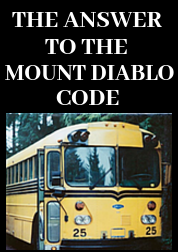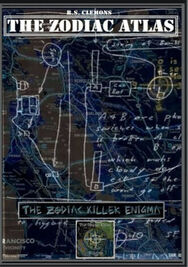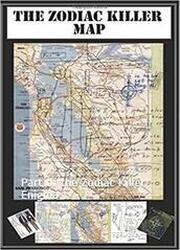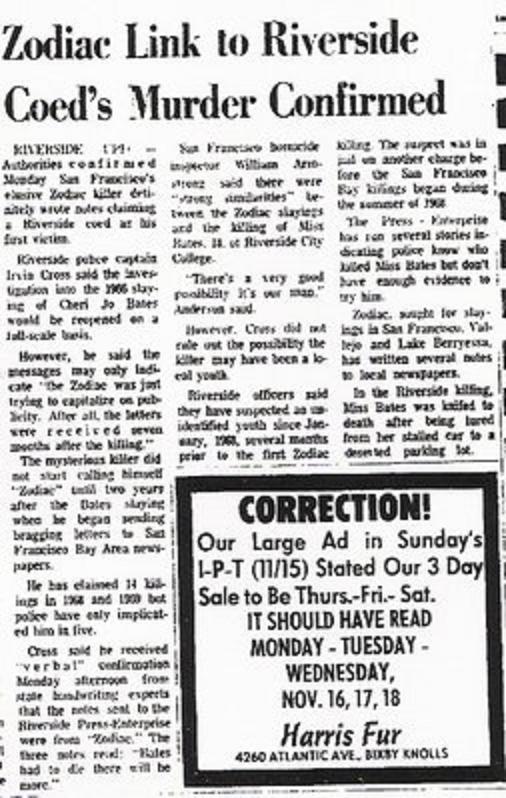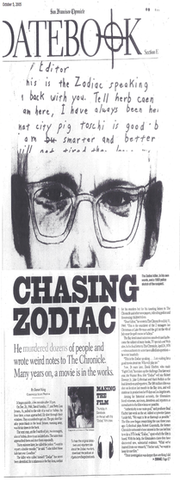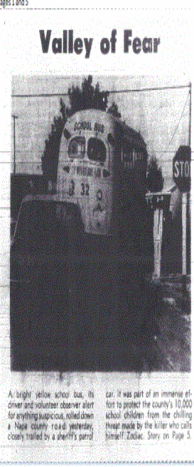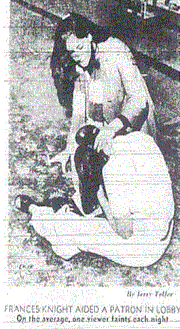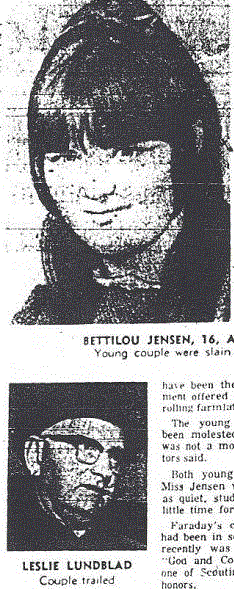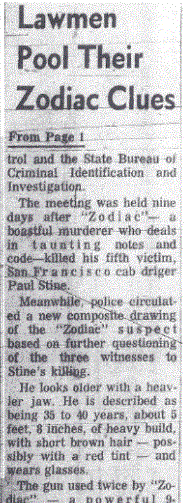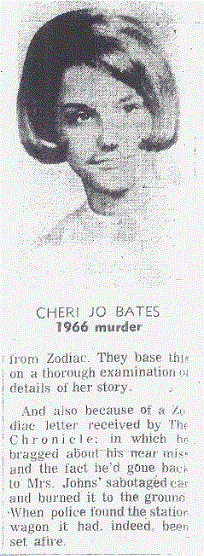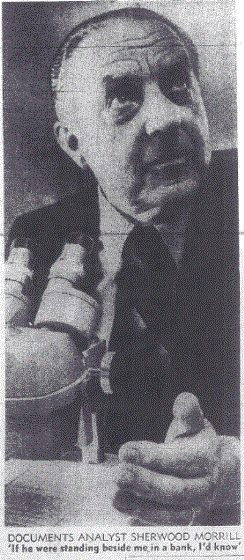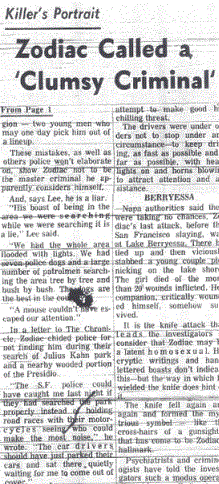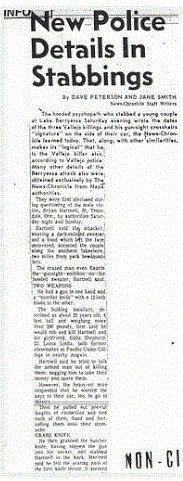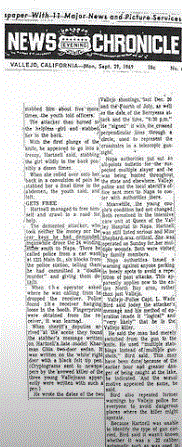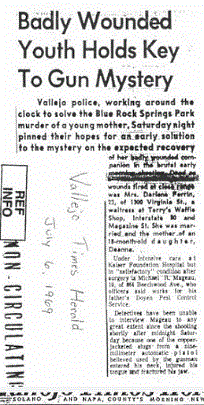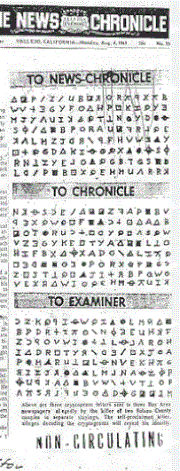The author begins by ladening their introduction with "young and beautiful" and "beautiful blond" just like the newspapers, in order to build the narrative of believability. The author then describes the disabling of the Volkswagen Beetle by disconnecting the "middle wire from the distributor" - another name for the coil wire described in the newspaper publication shown below. This was a key ingredient to convince investigators they were genuine, despite the fact they had approximately four weeks to uncover what the coil wire was. Quote from Liveaboutdotcom: "The ignition coil is the unit that takes your relatively weak battery power and turns it into a spark powerful enough to ignite fuel vapor. Inside a traditional ignition coil are two coils of wire on top of each other. These coils are called windings. One winding is called the primary winding, the other is the secondary. The primary winding gets the juice together to make a spark and the secondary sends it out the door to the distributor. You'll see three contacts on an ignition coil unless it has an external plug, in which case the contacts are hidden inside the case. The large contact in the middle is where the coil wire goes (the wire that links the coil to the distributor cap}. There is also a 12V+ wire that connects to a positive power source. The third contact communicates information to the rest of the car, like the tachometer". link.
An appeal for the weapon to be found was broadcasted by police almost immediately, describing it as a small knife or pocket knife, but it was never found. Why would a proclaimed big, brave, boasting killer add the phrase "with a small knife at her throat", if they were not using this to confirm the size of the knife described by police? The addition of the word "small" was totally unnecessary and devoid of any good reason, other than to convince the reader of the Confession Letter they were in fact the killer. If you read the multiple newspaper publications regarding the murder of Cheri Jo Bates, the overwhelming consensus is of a young woman "stabbed in the back, with her throat slashed", despite the fact that the autopsy showed far more wounds on the young woman's body, indicative of a prolonged and violent struggle between Cheri Jo Bates and her assailant. The Confession Letter just parroted these articles, stating "I plunged the knife into her, then finished the job out cutting her throat". The plunging of the knife was referencing the stab in the back, and the cutting of her throat just mimicked her throat being slashed. The fact that the author knew nothing about the intricacies of the crime was evident when they claimed "she went willingly, didn't put up a struggle and went to the slaughter like a lamb" - all of which were clearly untrue, and corroborated by not only the autopsy findings, but the freshly churned up driveway alongside the library.

The author of the Confession Letter claimed they made a call to the police or newspaper. However, the Riverside Police Department and the Riverside Press-Enterprise could not confirm any phone call made to them by the claimed killer of Cheri Jo Bates. Zodiac Killer Facts wrote "Police could not confirm a phone call to the police or the local newspaper, The Press-Enterprise. The letter was considered most suspicious. Kinkead offered a disturbing conclusion: “The person who wrote the confession is aware of facts about the homicide that only the killer would know. There is no doubt that the person who wrote the confession letter is our homicide suspect.” There has been no confirmation or admission that the murderer of Cheri Jo Bates made any phone calls subsequent to the crime, and as shown above, there is no evidence whatsoever that the killer and Confession Letter author are the same person. In fact, there is no evidence the author of the letter was even a man. Running the wording through many software programs has comprehensively indicated female authorship.
The only phone call we know of, was the anonymous call by a female the following day, describing screams being heard nearby. So, was the author of the Confession Letter when stating "Yes I did make that call to you also. It was just a warning" referring to this call - and pretending they were the anonymous caller as some form of practical joke. If so, then they would be claiming they were female by association. However, what they would not have known, was the extended version of this 'anonmous call' story, elaborated upon in the Inside Detective magazine on January 1969.
Other detectives interviewed residents of a nearby apartment building, A girl tenant in an apartment only a few doors from the dirt driveway where the body was discovered, told the detectives that she heard screaming and yelling about 10:30 pm. "Then I heard a muted scream, and then a loud sound like an old car being started up - this was about two minutes after I heard the first scream", the girl informant said. However, the girl admitted she had not called police that night to inform them of the sounds of apparent violence she had heard. Inside Detective, 1969.
The woman/girl was not anonymous because detectives had interviewed her in person at her apartment, but to any newspaper reader in 1966 they could have been forgiven for believing the woman was simply phoning police while remaining anonymous and unknown. Was the author of the Confession Letter, as they had done for all the details typed above, simply taken this "anonymous telephone caller" from the newspapers and claimed "Yes I did make that call to you also"? - and why the Riverside Police and Riverside Press-Enterprise recollect no phone call being received by the killer. If this were the case, then the author of the Confession Letter is effectively admitting they are a female, and certainly not the Zodiac Killer. If the author of the Confession Letter was actually the murderer of Cheri Jo Bates, then the young Riverside City College student could conceivably have been murdered by another woman - a story that I doubt many would believe.





 RSS Feed
RSS Feed

